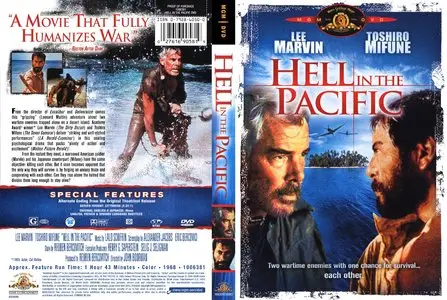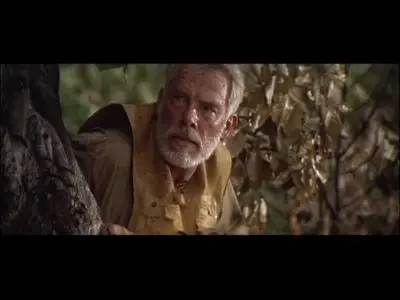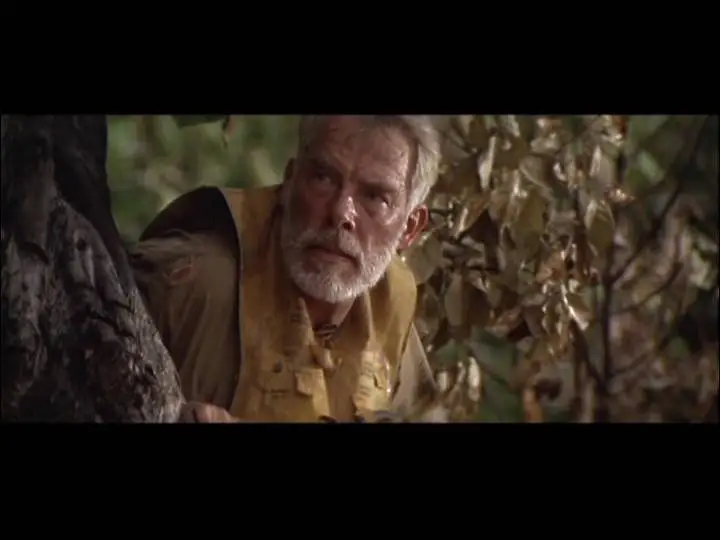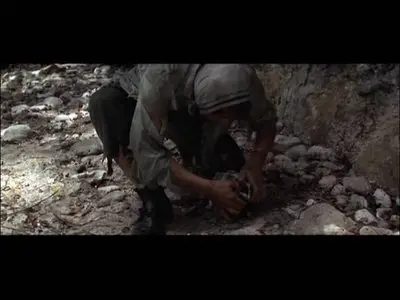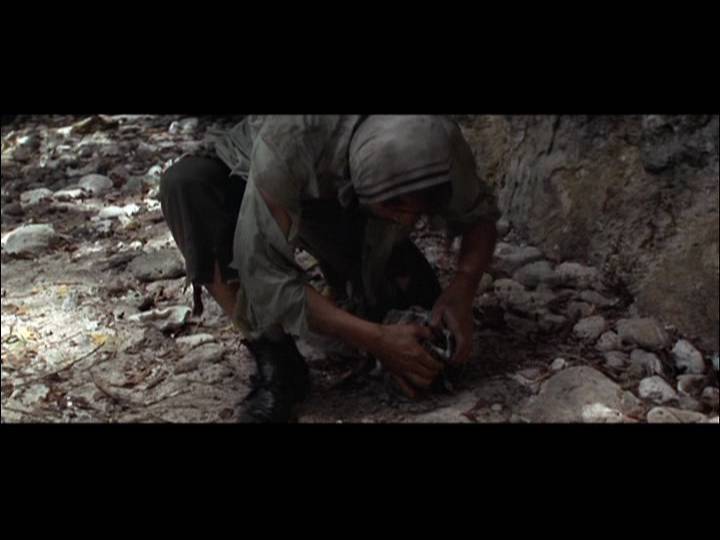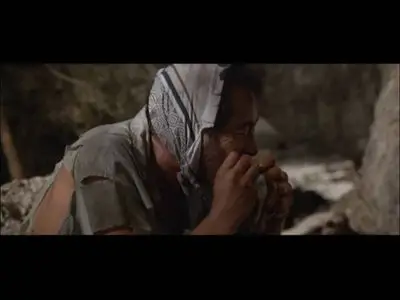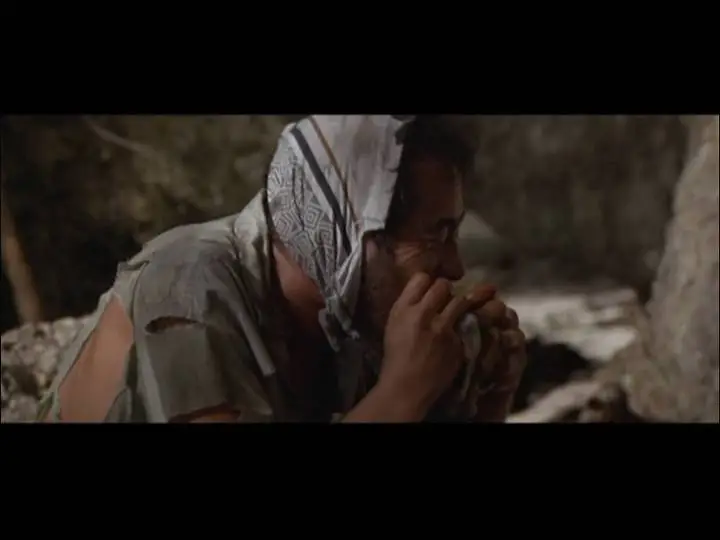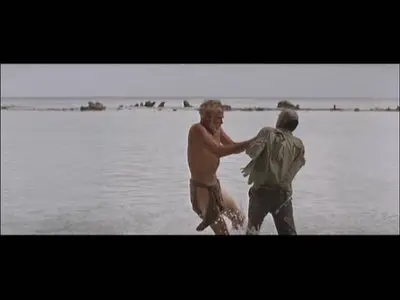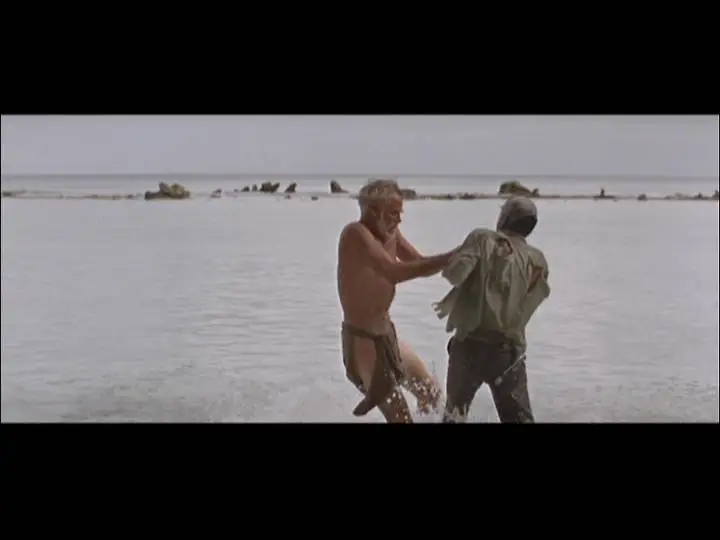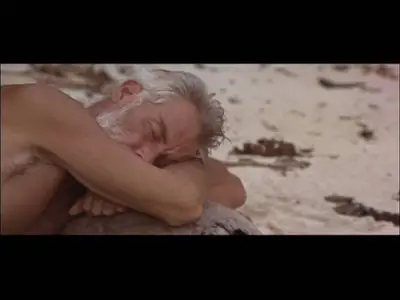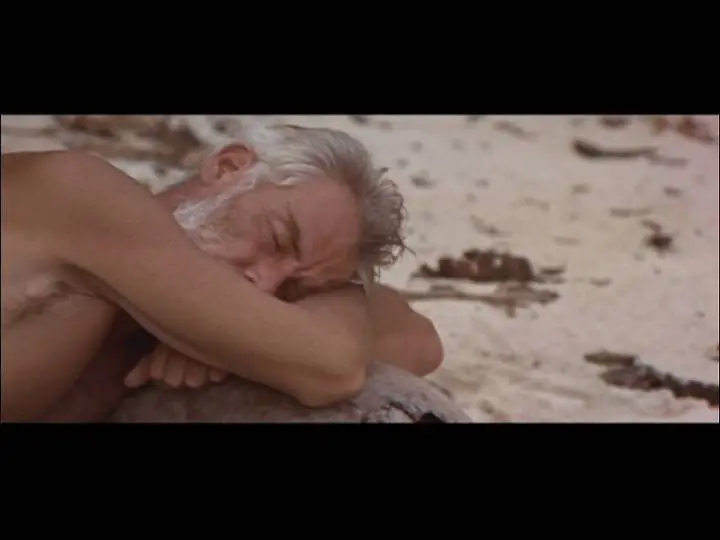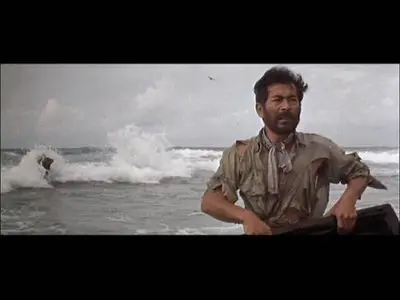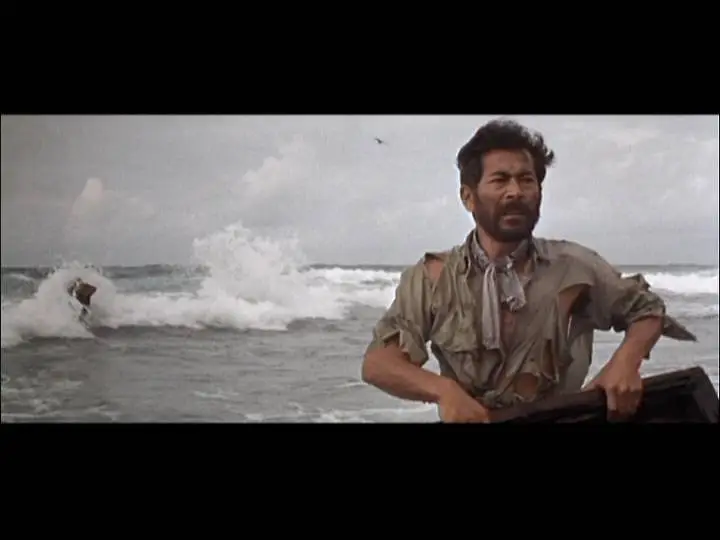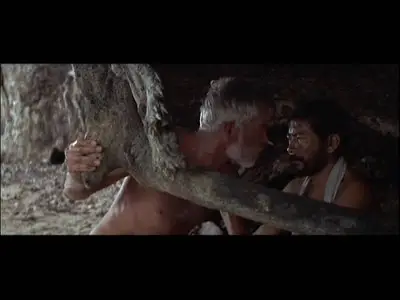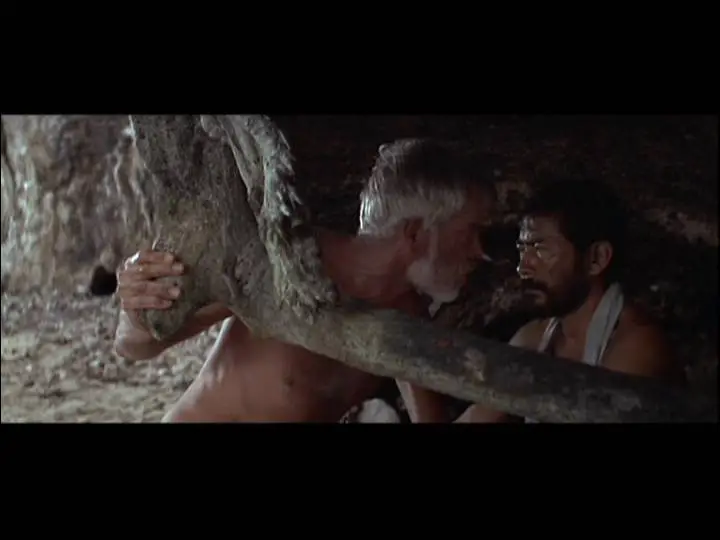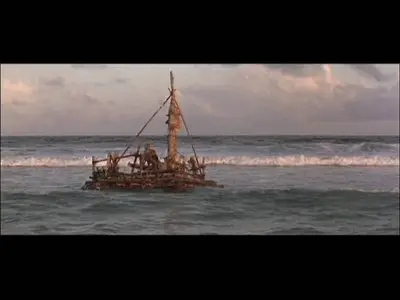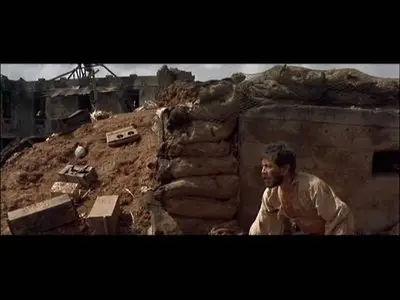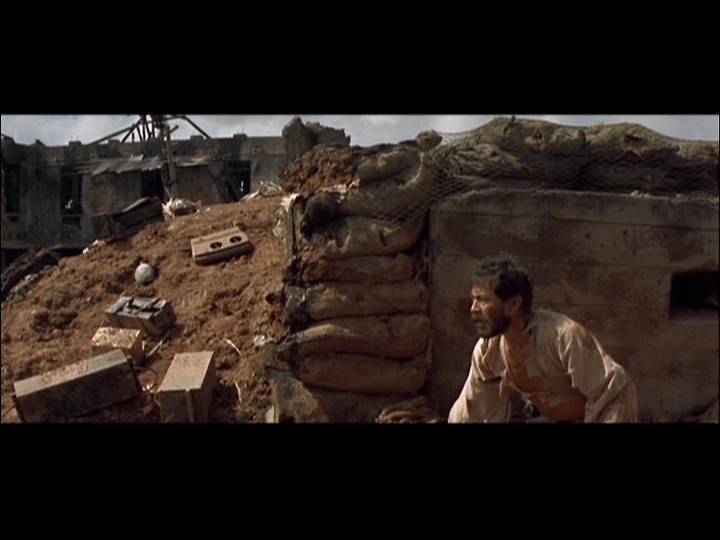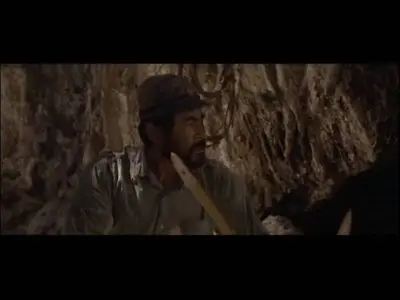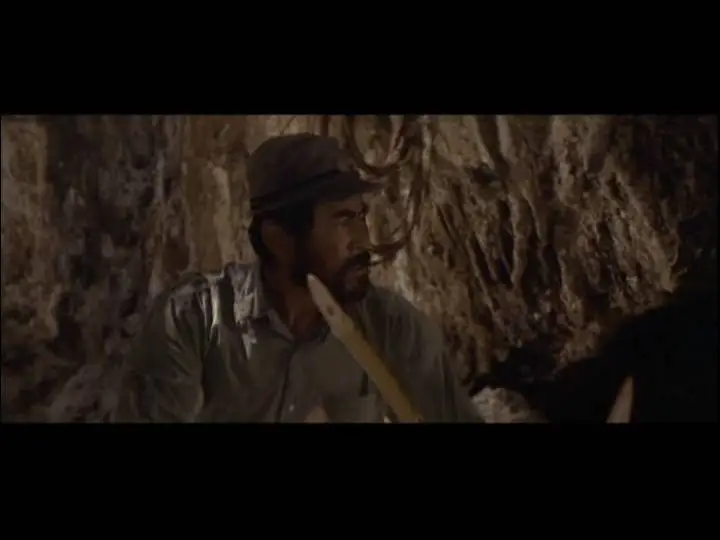(3249 x 2175)
Hell in the Pacific (1968, with original ending)
DVD5 (VIDEO_TS) | NTSC 4:3 (720x480) | 01:41:30 | 3,75 Gb
Audio: English-Japanese AC3 2.0 @ 192 Kbps | Subs: English, Spanish, French
Genre: War, Drama | USA
DVD5 (VIDEO_TS) | NTSC 4:3 (720x480) | 01:41:30 | 3,75 Gb
Audio: English-Japanese AC3 2.0 @ 192 Kbps | Subs: English, Spanish, French
Genre: War, Drama | USA
Survivors of a sea battle, an American Navy pilot (Lee Marvin) and a Japanese Navy Captain Kuroda (Toshiro Mifune) find themselves alone and almost weaponless, facing each other on a pretty but harsh Pacific isle with no fresh water. Their duel to the death fades as neither has the desire to kill the other, and after a period of hostility they begin to work as a survival team. The language barrier leads to a lot of shouting and crossed signals, but eventually they start construction of a seaworthy bamboo raft.
IMDB
The original film did not have subtitles. Mifune spoke Japanese and Marvin spoke English. In fact, neither of the actors understood each others language. The DVD comes with English, French and Spanish subtitles that translate the Japanese.
Was there a better hard man in the 70's then Lee Marvin ? I don't think so. Team him up with Toshiro Mifune (yojimbio, Seven Samurai), gorgeous scenery (Paulau islands) under the light hand of John Borman (Deliverance) and watch as a simple story grows and develops into a visual feast. There is no lead-in to the film, all we see is a lone Japanese soldier on a tropical island spotting a life raft and realising he is suddenly not alone, and worse, his company is an enemy soldier. The initial confrontations are tension filled as the two chase each other around and around their new home in a battle of wits and cunning. Eventually the inevitable happens and they are forced to start living together. Rather than a Disneyish style 'lets all learn to live together because we are all really the same under the skin' co-operation, the two have as little to do with each other as possible, unless arguing about possession of driftwood (in a scene that left me in tears of laughter). Eventually they do co-operate through necessity to leave the island and develop a bond of friendship through adversity, only to have this challenged when exposed to the realities of the world outside their desert island refuge. A bitter but unavoidable ending reminds us of the insanities of war. I loved this film because it was totally gripping in a way few movies are, I genuinely cared about the characters. It was in some ways like watching 'survivor' in the way the relationship changed-only in reverse- so naturally did it happen on screen. Bormans direction was great, more of a fly on the wall perspective that made the story all the more involving. This movie deserves to be seen.IMDB Reviewer
John Boorman turned his straight gangster tale Point Blank into a satisfyingly stylish art picture that could have been titled Last Year at Alcatraz. He followed it up with this less cerebral but more allegorical war drama. Hell in the Pacific reduces all of human conflict to two belligerent enemy soldiers clashing on an idyllic south seas island. Excellently played and beautifully shot, this would be a surefire gotta-have disc - if the transfer were a bit better.
Hell in the Pacific is one of John Boorman's best films. It's a lean and focused action drama in a beautiful setting with two of the world's most masculine stars in convincing combat. Most of it plays as a silent movie and Boorman does a bang-up job of keeping us keyed in to exactly what's going on: who's stalking who, and what the physical realities are in any particular situation.
What we see is belligerence at its most basic, as simple as one of Norman Mclaren's animated films about Neighbors battle over their garden fences. Marvin and Mifune are like cavemen, like children using dirty tricks, infuriating humiliations and deadly threats to bolster what are really defensive postures. Each gets the other dead to rights but refuses to deliver a coup de grace; each takes turns enforcing elaborate "I won, you're my slave" punishments. Even that grows unbearable. Mifune can't stand to see Marvin's silent, mocking eyes stare at him, and Marvin goes nuts trying to get Mifune to fetch a stick as if he were a dog.
Boorman handles the transition from violence to cooperation quite well and without betraying the kind of '60s pacifist attitude that mars films like Ladybug, Ladybug. Their one modern knife becomes a shared tool, with Mifune sharpening it for Marvin. Their continuing selfishness now seems ridiculous, when Marvin barks his claim on a worthless log, just to assert his aggressiveness.
All of this plays out in staggeringly beautiful island locations. The two actors are convincingly weatherbeaten and sunburned. Mifune manages to keep his tattered uniform in fairly good shape, but when covered in mud Marvin looks like a wooden ship's figurehead. Conrad Hall proves as adept with color as he was in B&W, with able assistance from soon-to-be equal camera superstar Jordan Cronenweth.
The film maintains a first-person, you-are-there realism right through difficult scenes like breaking through the reef surf in a handmade bamboo boat. It really is the two actors out there, and we get to reflect on how tough everything they're doing must have been.
(rest of review until quality evaluation not recommended for viewers who haven't seen the movie)
The closer Hell in the Pacific gets to its ending, the more we fear that a satisfactory finish will be impossible. Boorman and his screenwriters wrap up their tale in great style. Interestingly, action fans have never complained about the lack of a duel to the death (a commercial necessity today, see The Hunted) because by the third reel Marvin and Mifune are just too darn likeable for anyone to want to see either of them killed. Boorman finishes off his little art picture with a simple elliptical structure - when the pair get back to surroundings reminding them of their previous identities as sworn enemies, their natural truce fades. They shave, get cleaned up and drink saké together, but it's no use.
In the original cut Boorman opted for a quizzical anti-climax that used a patented Antonioni cut to black simply when the two men reverted to irreconcilable enemy status. For the American release, the end was trimmed and a more definite explosive finale substituted. It's okay, in a bogus Twilight Zone way, but it reflects commercial necessity over artistic choice. The disc carries the original ending as an extra. The standard commercial ending is what's on the main feature.
–––––––––––––––––
MGM's DVD of Hell in the Pacific is an ABC (Buena Vista) owned title. Since its source is a 2nd-party delivered element from outside the MGM vault, we can assume that MGM had no say in the format. What we end up with is an okay transfer that's letterboxed but not 16:9 enhanced. Normally this wouldn't be all that regrettable; Savant regularly gives Good ratings to transfers of older films if they're of anything resembling reasonable quality. But Hell in the Pacific, with all those sparkling-clear tidepools and lush green jungles, should look prettier than The Thin Red Line. We can really feel it when it rains, and the not-so-super resolution of the non-enhanced image makes this excellent film look second rate.
The only listed extra is the Alternate Ending; I believe the "from the original Theatrical release" subtitle is a mistake (here we go again, if I'm wrong). It's presented without comment and doesn't start early enough to play the drinking scene without the sound of approaching naval gunfire.
The English subtitles are very welcome. With them we understand not only Marvin's taunting English but Mifune's dialogue. Japanese audiences must have been pleased with Mifune's mocking and humorous lines. Marvin tries to get Mifune to fetch a stick. Mifune: "Idiot!"
The paste-up cover art doesn't convey much of the specialness of the movie, but I don't remember the original campaign artwork for comparison.Glenn Erickson, DVDTalk
Many Thanks to Unkabunk.
If you want to download it, but found out that links are dead,
just leave a comment or PM me!
just leave a comment or PM me!
No More Mirrors.


